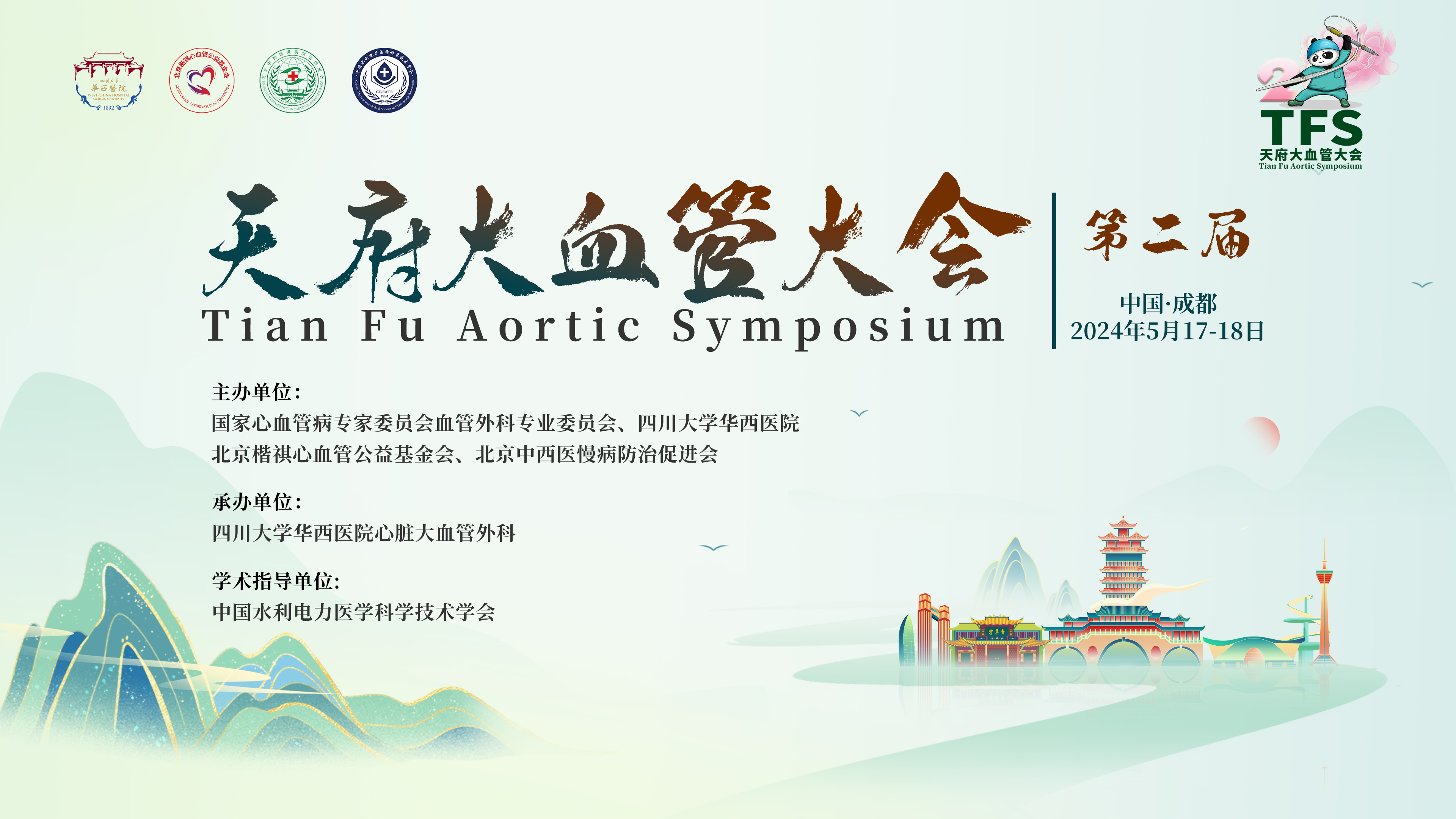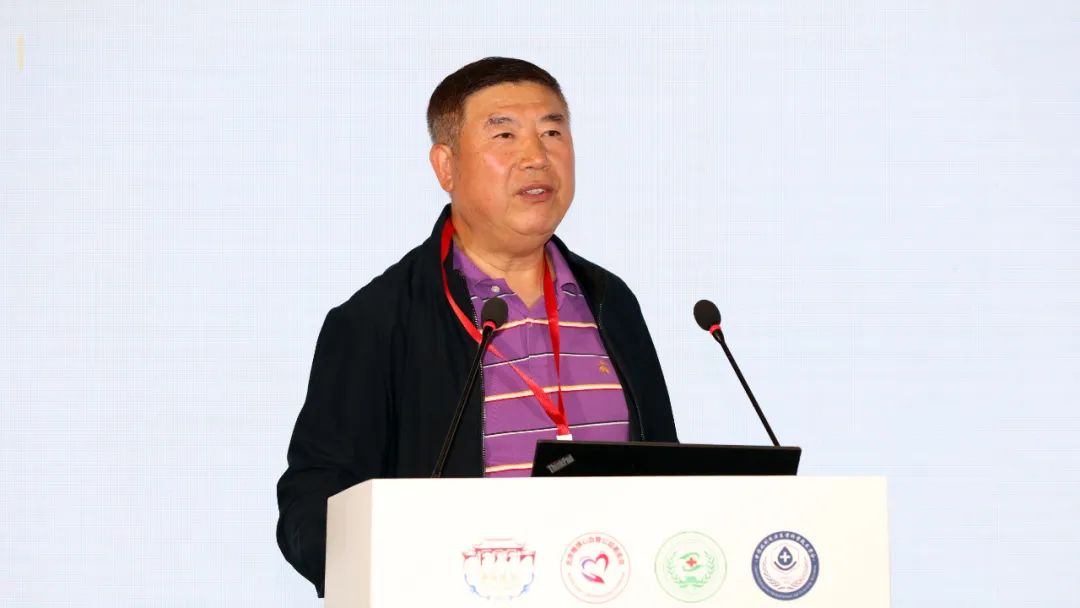
Aortic surgery has entered a new era, and Chinese aortic surgery has put an end to the era of “bitter battle, night battle, bloody battle, and deadly battle”, and “doctors wearing stars and moonlight, patients bleeding into rivers, and family members losing both their money and their family members”. The goal of surgery from “survival” to “live well”, the scope of surgery from local aorta to all aorta development, surgeons from senior to young people, surgical hospitals from the central city to the grass-roots hospitals, emergency aortic surgery routinized. 2024 On May 18th, during the 2nd Tianfu Large Vessel Conference held in Chengdu, Prof. Sun Lizhong from Shanghai Deda Hospital gave a wonderful speech on the topic of “Development Opportunities and Challenges of Domestic Aortic Surgery”.

Aortic intervention: rapid development, greater maturity, and a return to rationality
The field of aortic intervention is undergoing rapid development, with the development of new devices and materials significantly expanding the indications for treatment while reducing the technical difficulty. This has led to a rapid spread of aortic interventions, even in county hospitals. As the technology continues to advance, we have entered the era of “total aortic intervention”, which signifies a new level of popularity and technical level of aortic intervention.
Aortic intervention offers significant advantages, including a high technical success rate, a wide range of procedural indications, a favorable near- and mid-term prognosis, and low perioperative risks and early complications. The shortened procedure time makes it particularly suitable in emergency resuscitation. In addition, the ability to manage multiple composite lesions of wider extent in a single procedure allows for better aortic remodeling as an effective complement to surgical procedures. These advantages make aortic intervention more acceptable to patients as it excels in terms of less trauma, less organ ischemia, and less bleeding in the operative field. It is also favored by physicians because of its low technical difficulty, low team dependence, ease of application, low cost of perioperative management, low perioperative mortality, and non-total or null results.
Although the proportion of aortic interventions in the treatment of aortic diseases is gradually increasing and the proportion of surgical procedures is shrinking, the absolute number of surgical procedures is still increasing due to the large patient base in China and the fact that many patients have not yet been effectively treated. With the continuous progress of technology and the maturity of treatment concepts, aortic intervention is gradually returning to rationality and becoming an indispensable part of aortic disease treatment.
What are the opportunities and challenges for aortic surgery?
Aortic surgery is facing multiple opportunities and challenges in the current medical field. In terms of opportunities, the “Healthy China Strategy” at the national level provides policy support and development direction for aortic surgery and encourages the innovation and improvement of medical technology and services. However, the challenges are equally obvious, especially in the context of medical insurance cost control, hospitals need to make more careful consideration of the input-output ratio. Since aortic surgery is usually costly and patient turnover is slow, it is not economically advantageous, which to some extent restricts the development of the discipline.
Aortic surgery also faces competitive pressures from interspecialties in terms of survival and growth of the discipline. With the advancement and popularization of pharmacological and interventional techniques, many cases that would otherwise require surgical intervention can now be treated with these non-surgical modalities. This trend has led to a more complex characterization of lesions in patients undergoing surgical procedures, with a concomitant increase in the difficulty of the procedure, as well as greater challenges to the safety of the procedure. On a technical level, the main problems facing aortic surgery are bleeding and ischemia. These two issues are central to surgical safety and key to long-term survival. To overcome these challenges, aortic surgery needs to continually improve surgical safety while seeking policy support and rational allocation of medical resources to ensure that patients are able to achieve the best possible outcome and long-term quality of survival.
Surgery for acute type A aortic coarctation is a priority
In the field of aortic surgical treatment, acute type A aortic coarctation surgery is undoubtedly a key and difficult point. The high incidence of acute type A aortic coarctation in our patients further emphasizes the seriousness of this condition. Because type A coarctation is an acute lesion with a very short time window, it requires urgent surgical treatment, whereas other aortic lesions are usually managed without such urgency. Surgical techniques for acute type A coarctation are relatively well established. In patients with acute type A coarctation who do not have a comorbid malperfusion syndrome or other preoperative organ damage, the operative mortality rate does not differ significantly from that of other cardiovascular procedures. Even in patients with combined malperfusion syndromes, the outcome is still expected to be positive as long as timely surgical treatment is available.
However, the main problems currently faced include, firstly, the fact that many patients die before they reach the hospital. Even if the patient is able to reach the hospital, the timing of emergency surgery may be delayed due to medical resource constraints. In addition, if the hospital lacks the capacity to perform such difficult surgeries, the patient will need to be transported to a capable medical facility, which further prolongs the time it takes for the patient to receive treatment and reduces the patient's chances of survival.
Therefore, in order to improve the therapeutic efficacy and survival rate of patients with acute type A aortic coarctation, it is necessary to strengthen the construction of the emergency medical care system, optimize the allocation of medical resources, improve the surgical capacity of hospitals, and ensure that patients are able to receive timely and professional medical treatment.
Indications and patient selection for interventional therapy: challenges and optimization
With the widespread use of interventional techniques, the increase in the number of procedures has indeed brought about a series of new problems. We must be careful in the selection of indications for interventional therapy and in the selection of patients, because inappropriate patient selection may lead to complications related to interventional therapy, which in turn may seriously affect the therapeutic effect. Indications for interventional therapy need to be considered especially carefully in certain specific cases, such as inflammatory diseases, Marfontein syndrome, and various other anatomically unique patients. Even with rigorous patient selection, interventions may still present a unique set of complications, such as stent fracture and infection. All of these conditions pose new challenges for further surgical procedures.
When selecting indications for interventional therapy, we are faced with a critical question: is technology prioritized, lesion prioritized, or patient prioritized? Whichever priority is chosen, we must ensure that the treatment is safe and effective for the patient. In order to achieve the treatment goal of less suffering for the physician, less suffering for the patient, and less money for the family, we need to pursue the best treatment means under the premise of ensuring safety and effectiveness.This includes a comprehensive assessment of the patient, selection of an appropriate interventional therapy program, and close monitoring of the patient's response to treatment and recovery. The most important thing for the survival and development of the discipline remains the continuous research and development of new materials, the application of new technologies, and the pursuit of better therapeutic outcomes. Through these efforts, we can improve the safety and efficacy of interventional therapy and reduce complications, thus providing better medical services to patients.
Summarize
Aortic interventional therapy technology is undergoing a rapid development phase, and as the technology continues to mature and standardize, we should be more rational about the application of interventional therapy. Although interventional therapy plays an increasingly important role in the treatment of aortic diseases, surgery is still the mainstream method of treating aortic diseases, and interventional therapy serves as an important complementary part of it. Standardized interventional therapy not only helps to improve the therapeutic effect, but also promotes the overall development of aortic surgery. With the advancement of medical technology, minimally invasive surgery and multidisciplinary integration have become an irreversible trend, which will bring more innovative possibilities for the treatment of aortic diseases. Acute type A aortic coarctation surgery has always been the focus and difficulty in aortic surgery due to its urgency and complexity. With the widespread use of interventional therapy, it is expected that the number of complications arising from interventions requiring surgical intervention will increase accordingly. The development of new materials will provide new ideas and tools for the improvement of surgical techniques, which is expected to further enhance the safety and effectiveness of surgery. Good organ protection and hemoprotection measures are essential to improve surgical outcomes, which will help to improve the prognosis and quality of life of patients.


